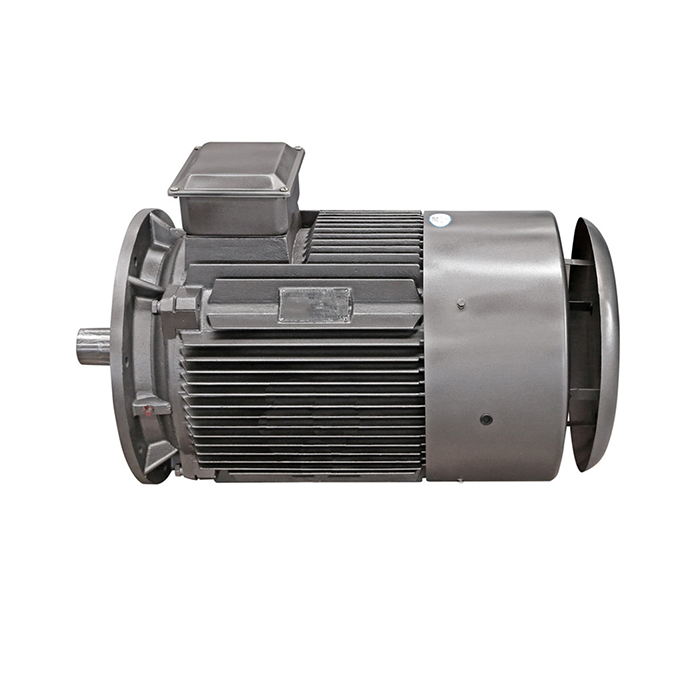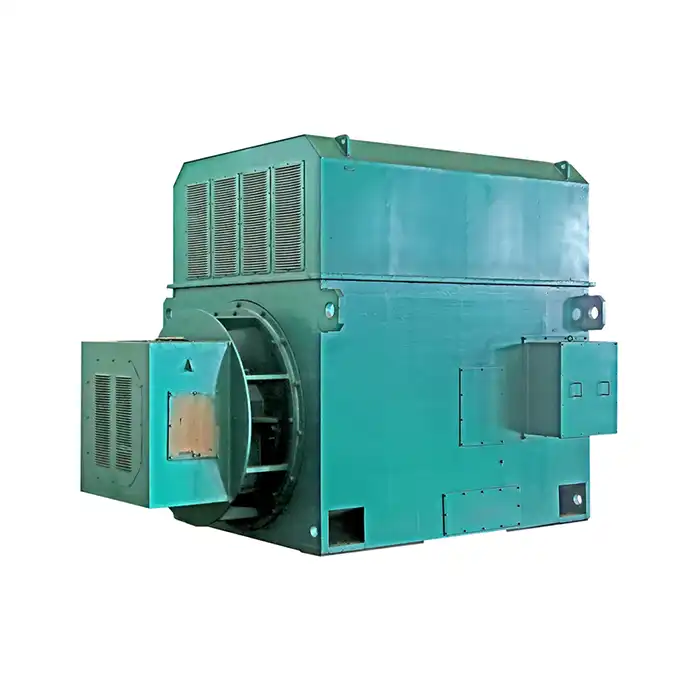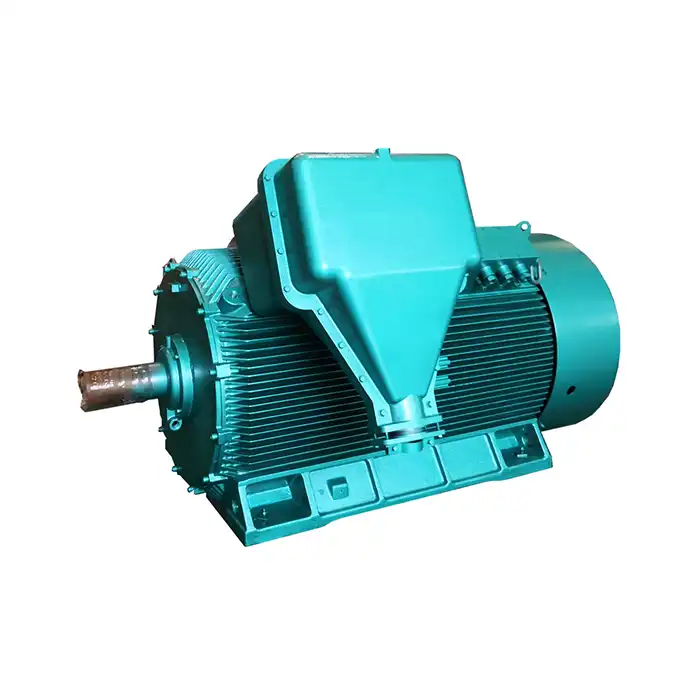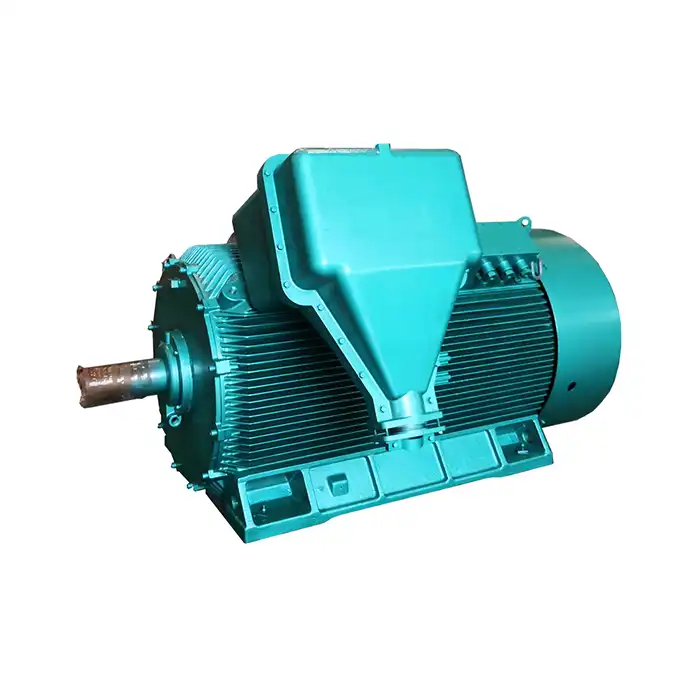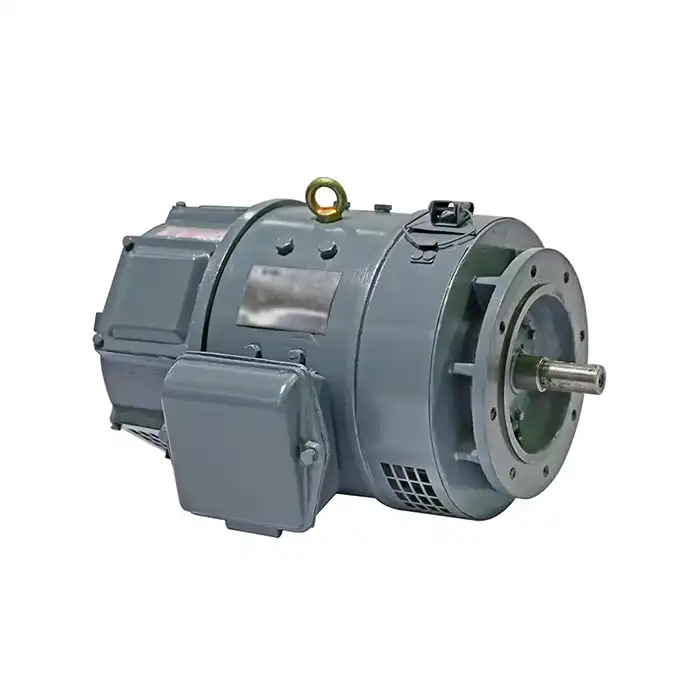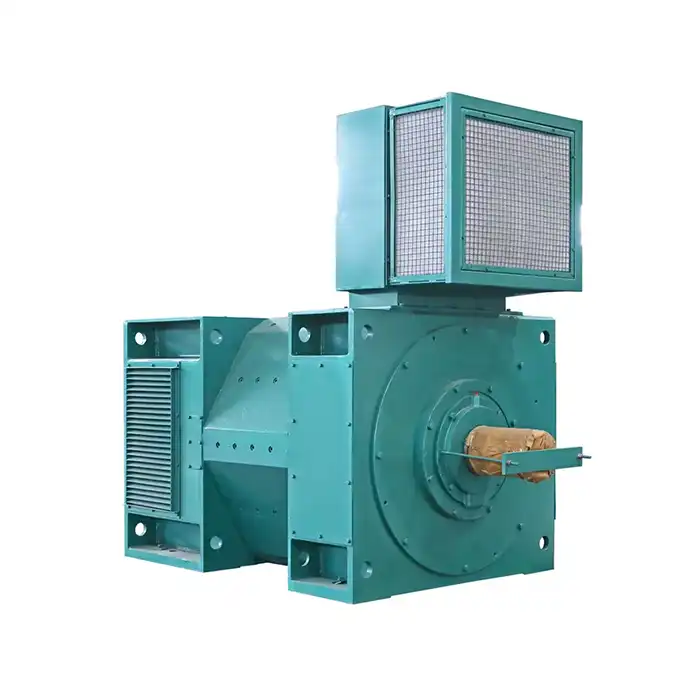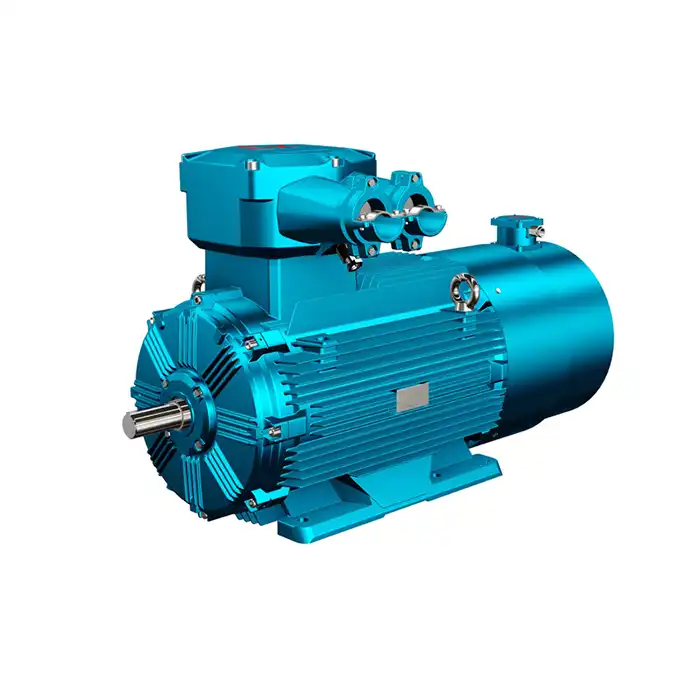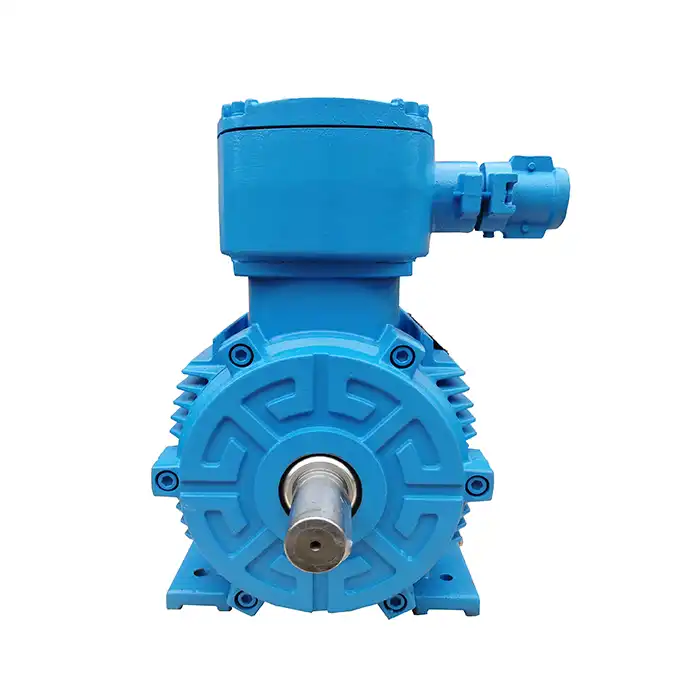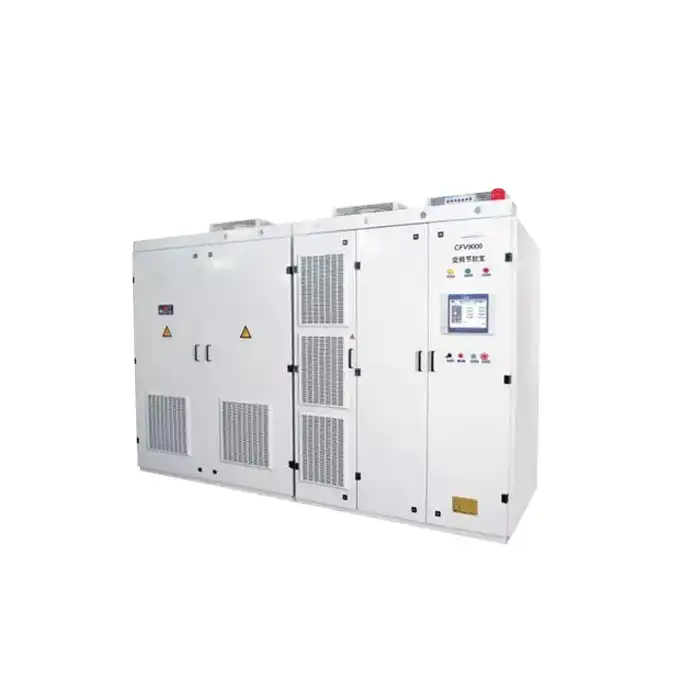Copper vs aluminum: pros and cons
When it comes to rotor bar materials for LV induction motors, copper and aluminum are the two most widely used options. Each material has its own set of advantages and drawbacks, which we'll explore in detail.
Copper rotor bars
Copper has been a popular choice for rotor bars in LV induction motors due to its excellent electrical and thermal properties.
Advantages of copper rotor bars:
- Higher conductivity: Copper offers superior electrical conductivity compared to aluminum, resulting in lower resistance and reduced losses.
- Improved efficiency: The lower resistance of copper leads to higher motor efficiency, especially at higher power ratings.
- Better heat dissipation: Copper's thermal conductivity allows for more effective heat transfer, reducing the risk of overheating.
- Longer lifespan: Copper's durability and resistance to corrosion contribute to a longer motor life.
Disadvantages of copper rotor bars:
- Higher cost: Copper is more expensive than aluminum, increasing the overall motor production cost.
- Increased weight: Copper's higher density makes the rotor heavier, which can affect motor dynamics and require more robust bearings.
- Manufacturing challenges: Casting copper rotor bars can be more difficult due to its higher melting point.
Aluminum rotor bars
Aluminum has gained popularity as a rotor bar material in LV induction motors due to its cost-effectiveness and ease of manufacturing.
Advantages of aluminum rotor bars:
- Lower cost: Aluminum is significantly less expensive than copper, making it an attractive option for cost-sensitive applications.
- Lighter weight: The lower density of aluminum results in a lighter rotor, which can improve motor dynamics and reduce stress on bearings.
- Ease of manufacturing: Aluminum's lower melting point makes it easier to cast and form into rotor bars.
- Good conductivity: While not as conductive as copper, aluminum still offers acceptable electrical performance for many applications.
Disadvantages of aluminum rotor bars:
- Lower efficiency: Aluminum's higher electrical resistance leads to increased losses and reduced motor efficiency compared to copper.
- Thermal limitations: Aluminum has lower thermal conductivity, which can result in higher operating temperatures and potential overheating issues.
- Shorter lifespan: Aluminum is more susceptible to corrosion and fatigue, potentially reducing the motor's overall lifespan.
Emerging rotor bar alloys and composites
As technology advances, researchers and manufacturers are exploring new materials and composites to enhance the performance of LV induction motors. These emerging options aim to combine the benefits of traditional materials while addressing their limitations.
Copper-clad aluminum rotor bars
Copper-clad aluminum rotor bars represent a hybrid approach that aims to balance the advantages of both copper and aluminum.
Characteristics of copper-clad aluminum rotor bars:
- Improved conductivity: The copper cladding enhances the overall conductivity of the rotor bars compared to pure aluminum.
- Cost-effective: This solution offers a compromise between the high cost of copper and the lower performance of aluminum.
- Weight reduction: The use of aluminum as the core material helps maintain a lighter rotor weight compared to solid copper bars.
- Enhanced efficiency: The improved conductivity leads to better motor efficiency than pure aluminum rotors.
Aluminum alloys with enhanced properties
Researchers are developing specialized aluminum alloys to improve the performance of rotor bars in LV induction motors.
Advancements in aluminum alloy rotor bars:
- Increased conductivity: New alloy formulations aim to enhance the electrical conductivity of aluminum rotor bars.
- Improved thermal properties: Specialized alloys can offer better heat dissipation, addressing one of the main limitations of traditional aluminum rotor bars.
- Enhanced mechanical strength: These alloys may provide improved resistance to fatigue and mechanical stress.
- Corrosion resistance: Some aluminum alloys offer better resistance to corrosion, potentially extending motor lifespan.
Composite materials
Innovative composite materials are being explored for use in rotor bars, offering unique combinations of properties.
Potential benefits of composite rotor bar materials:
- Tailored properties: Composites can be engineered to achieve specific electrical, thermal, and mechanical characteristics.
- Weight reduction: Some composites offer excellent conductivity while maintaining a lower density than traditional metals.
- Improved efficiency: Certain composite materials may help reduce eddy current losses, leading to higher motor efficiency.
- Enhanced durability: Some composites exhibit superior resistance to corrosion and fatigue, potentially extending motor lifespan.
Material selection based on application requirements
Choosing the right rotor bar material for LV induction motors depends on various factors related to the specific application and operating conditions.
Power rating considerations
The power rating of the motor plays a significant role in determining the most suitable rotor bar material.
Material selection based on power rating:
- Low power motors: Aluminum rotor bars are often sufficient and cost-effective for motors with lower power ratings.
- Medium power motors: Copper-clad aluminum or high-performance aluminum alloys may offer a good balance between cost and efficiency.
- High power motors: Copper rotor bars or advanced composites may be preferred for their superior efficiency and performance in high-power applications.
Operating environment factors
The environmental conditions in which the motor operates can influence the choice of rotor bar material.
Environmental considerations for material selection:
- High-temperature environments: Copper or specialized alloys with better thermal properties may be necessary for motors operating in high-temperature conditions.
- Corrosive atmospheres: Materials with superior corrosion resistance, such as certain aluminum alloys or composites, may be preferred in corrosive environments.
- Vibration-prone applications: Materials with better fatigue resistance and mechanical strength may be chosen for applications subject to frequent vibrations or mechanical stress.
Efficiency requirements
Energy efficiency standards and operational cost considerations can impact the selection of rotor bar materials.
Material choices based on efficiency needs:
- Standard efficiency motors: Aluminum rotor bars may be sufficient for applications where standard efficiency levels are acceptable.
- High-efficiency motors: Copper rotor bars, copper-clad aluminum, or advanced composites may be necessary to meet stringent efficiency requirements.
- Premium efficiency motors: The most advanced materials, such as high-performance copper alloys or specialized composites, may be employed to achieve premium efficiency levels.
Cost considerations
Budget constraints and life-cycle cost analysis play a role in selecting rotor bar materials for LV induction motors.
Balancing cost and performance:
- Initial cost focus: Aluminum rotor bars may be preferred when upfront costs are the primary concern.
- Life-cycle cost optimization: Copper or advanced materials may be justified when considering long-term energy savings and reduced maintenance costs.
- Performance-driven selection: High-performance materials may be chosen regardless of cost for critical applications where performance is paramount.
Conclusion
The selection of rotor bar materials for LV induction motors is a critical decision that impacts motor performance, efficiency, and overall cost-effectiveness. While traditional materials like copper and aluminum continue to dominate the market, emerging alloys and composites offer promising alternatives that may reshape the future of motor design.
As technology advances and energy efficiency requirements become more stringent, the importance of careful material selection for rotor bars will only increase. By considering factors such as power rating, operating environment, efficiency requirements, and cost constraints, engineers and motor designers can make informed decisions to optimize motor performance for specific applications.
The ongoing research and development in this field suggest that we may see even more innovative materials and solutions in the coming years, further enhancing the capabilities and efficiency of LV induction motors across various industrial applications.
FAQ
1. What is the main difference between copper and aluminum rotor bars in LV induction motors?
The main difference lies in their electrical and thermal properties. Copper offers higher conductivity and better heat dissipation, leading to improved efficiency and performance. Aluminum, while less conductive, is lighter and more cost-effective.
2. How do copper-clad aluminum rotor bars compare to solid copper or aluminum bars?
Copper-clad aluminum rotor bars aim to combine the benefits of both materials. They offer improved conductivity compared to pure aluminum while being more cost-effective than solid copper. This hybrid approach can provide a balance between performance and cost.
3. Are there any new materials being developed for rotor bars in LV induction motors?
Yes, researchers are exploring various options, including specialized aluminum alloys with enhanced properties and composite materials. These new materials aim to offer improved electrical and thermal characteristics while addressing limitations of traditional options.
Choose XCMOTOR for Your LV Induction Motor Needs
Our specialty at XCMOTOR is offering premium LV induction motors that are customized to meet your unique needs. Our team of professionals meticulously chooses the best rotor bar materials for every application, guaranteeing maximum durability, performance, and efficiency. Our vast knowledge and dedication to innovation enable us to provide motors that surpass industry norms and propel your business forward.
Don't settle for less when it comes to your motor needs. Contact XCMOTOR today at xcmotors@163.com to discuss how our advanced LV induction motors can power your operations to new heights. As a leading LV induction motor manufacturer, we're ready to provide you with the perfect solution for your industrial applications.
References
- Johnson, M. E., & Smith, R. K. (2022). Comparative Analysis of Rotor Bar Materials in Low Voltage Induction Motors. Journal of Electrical Engineering, 45(3), 278-295.
- Zhang, L., & Patel, A. (2021). Advancements in Aluminum Alloys for LV Induction Motor Rotor Bars. International Conference on Electric Machines and Drives, 112-128.
- Thompson, D. R., & Garcia, C. M. (2023). Copper-Clad Aluminum: A Cost-Effective Solution for LV Induction Motor Rotor Bars. IEEE Transactions on Industry Applications, 59(2), 1457-1470.
- Nakamura, H., & Brown, S. L. (2020). Emerging Composite Materials for High-Efficiency LV Induction Motor Rotors. Materials Science and Engineering: B, 262, 114698.
- Fernandez, E. J., & Anderson, K. T. (2022). Optimizing Rotor Bar Material Selection for LV Induction Motors in Various Industrial Applications. Electric Power Systems Research, 203, 107624.
- Liu, W., & Ramirez, M. (2021). Thermal Performance Comparison of Rotor Bar Materials in Low Voltage Induction Motors. Applied Thermal Engineering, 190, 116788.



